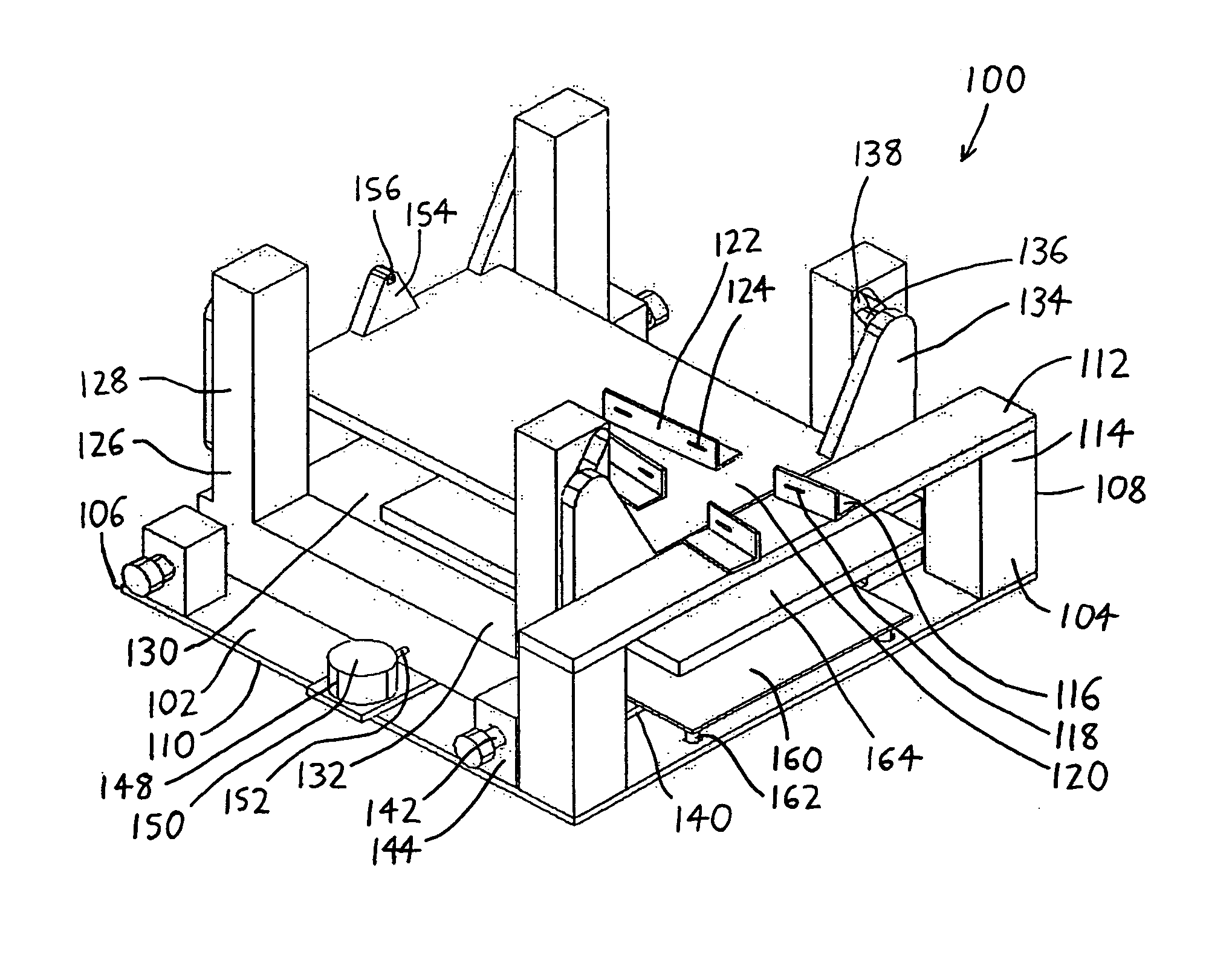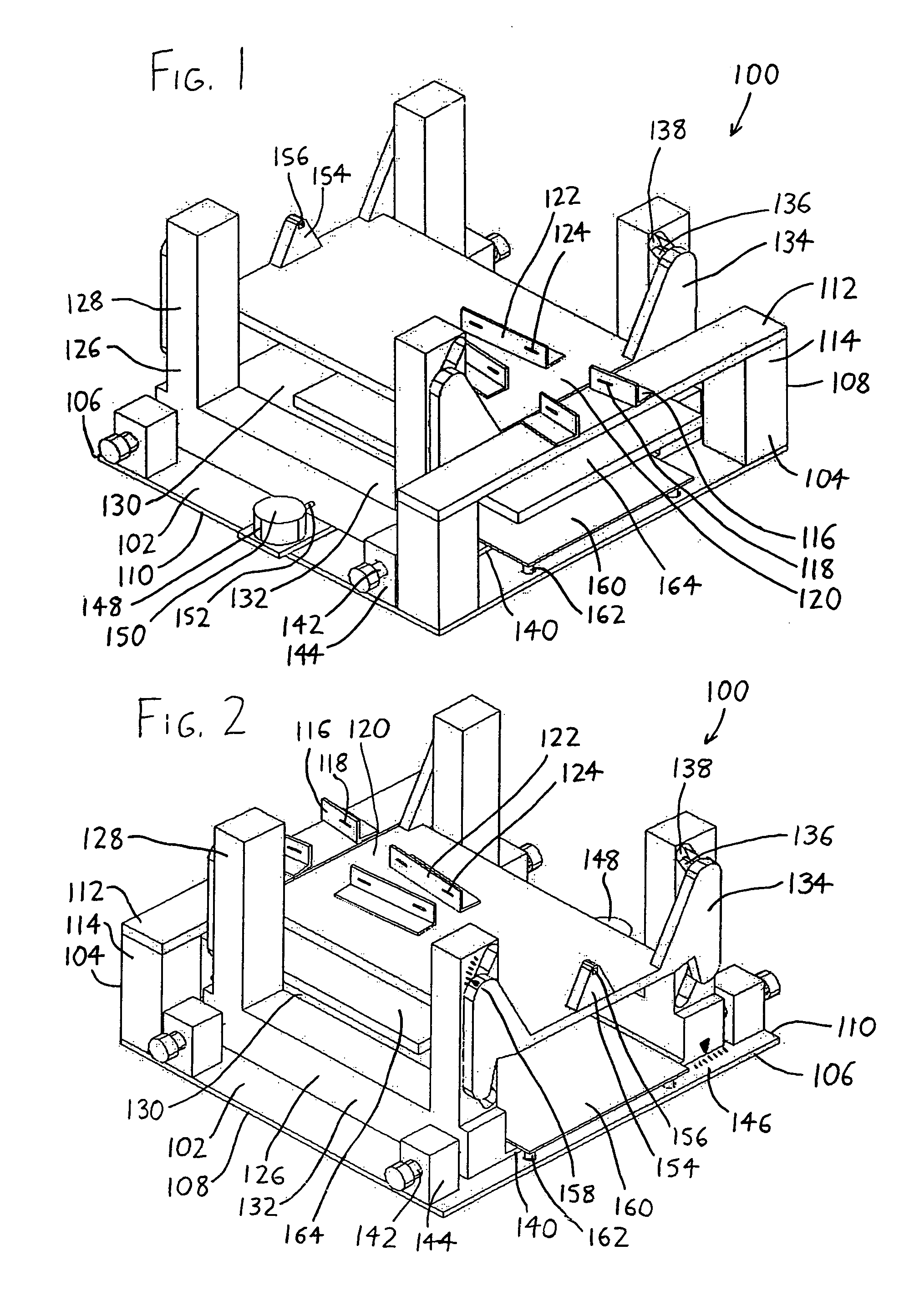Veterinary goniometer for testing of animal leg joints
a goniometer and leg joint technology, applied in the field of veterinary diagnostic devices, can solve the problems of pet owners' distress, decreased mobility, animals are also prone to knee injuries,
- Summary
- Abstract
- Description
- Claims
- Application Information
AI Technical Summary
Benefits of technology
Problems solved by technology
Method used
Image
Examples
Embodiment Construction
[0013] In FIG. 1, an exemplary goniometer is depicted generally by the reference numeral 100. The goniometer 100 includes a goniometer base 102 suitable for placement on a standard veterinary examination room table, i.e., it has a relatively small footprint, preferably measuring no more than 2-3 feet along any side. The goniometer 100 has a front side 104 at which the animal is located when the device is in use, an opposing rear side 106, and opposing right and left sides 108 and 110.
[0014] At the front side 104 of the goniometer 100, an anchor platform 112 is immovably affixed above the goniometer base 102 by a pair of opposing legs 114 bridging the base 102 and anchor platform 112. The anchor platform 112 is intended to hold an animal's upper leg (thigh and femur) immobile as the animal lies on its side adjacent the goniometer 100 so that the relative movement of the lower leg (shin and tibia) can be evaluated. Thus, the anchor platform 112 preferably includes some means for affi...
PUM
 Login to View More
Login to View More Abstract
Description
Claims
Application Information
 Login to View More
Login to View More - R&D
- Intellectual Property
- Life Sciences
- Materials
- Tech Scout
- Unparalleled Data Quality
- Higher Quality Content
- 60% Fewer Hallucinations
Browse by: Latest US Patents, China's latest patents, Technical Efficacy Thesaurus, Application Domain, Technology Topic, Popular Technical Reports.
© 2025 PatSnap. All rights reserved.Legal|Privacy policy|Modern Slavery Act Transparency Statement|Sitemap|About US| Contact US: help@patsnap.com


